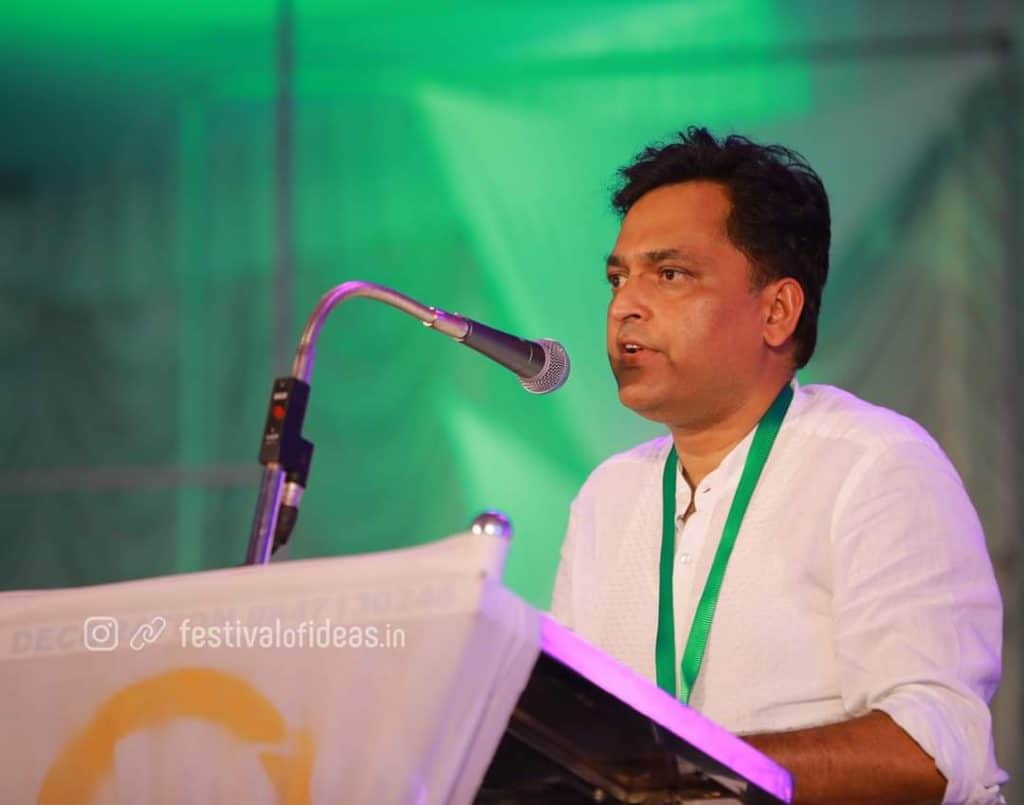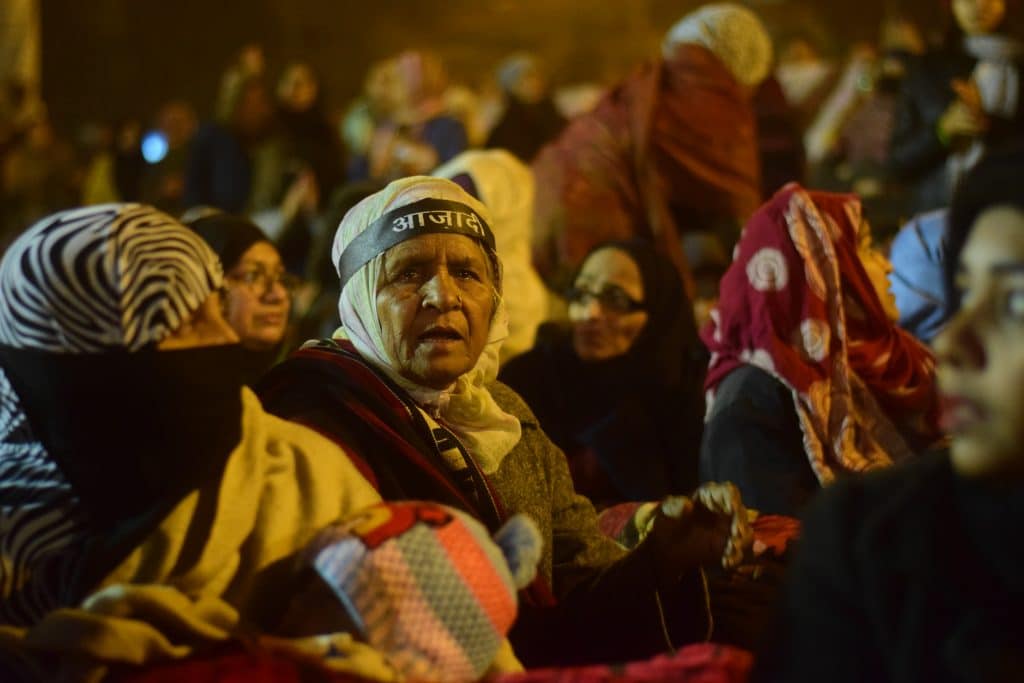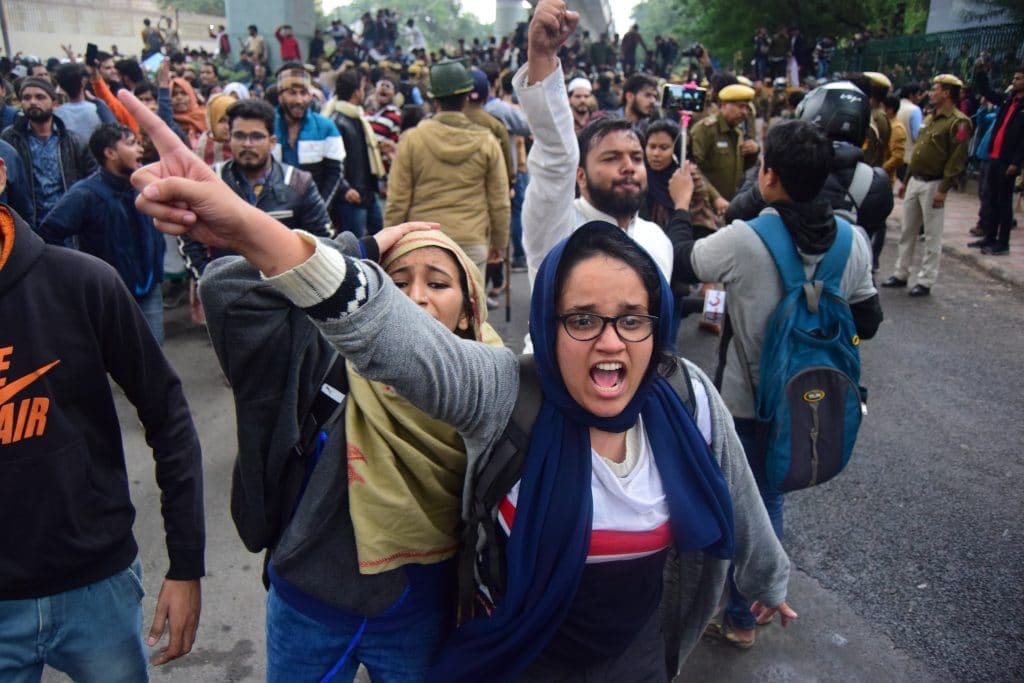
On 11 December 2019, Indian Parliament passed the Citizenship Amendment Act (CAA) that triggered a nationwide protest movement against the legislation that discriminates against Muslims and violates the country’s Constitutional norms. One year later, in an interview to P P Jaseem, a Delhi-based journalist, Irfan Ahmad, political anthropologist and senior research fellow at the Max Planck Institute for the Study of Religious and Ethnic Diversity, Göttingen in Germany, explained how to read the anti-CAA movement. Author of two monographs, most recently Irfan Ahmad is the co-editor, with Pralay Kanungo, of The Algebra of Warfare-Welfare: A Long View of India’s 2014 Election (Oxford University Press, 2019).
P P Jaseem: Was the anti-CAA protest just a struggle for constitutional values? Or, something bigger? How do you see that claim?
Irfan Ahmad: The anti-CAA protest was not just one thing. Certainly, it was about upholding the Constitutional values. Let us not forget that in many ways, the new religiously discriminatory Citizenship law seemed to challenge the very political existence of Muslims. As many have said, the protest was a movement of inclusion; to widen the scope of India as a nation-state, especially when Indian politics and laws were being made to appease Hindus. Remarkably, women were in forefront of the movement, which was peaceful, despite provocation and shots openly fired by Hindutva activists at the protesters. Notably, the movement brought to light a new generation of youth leaders with a creative, distinct vocabulary.
This is all true.
Analytically, the countrywide anti-CAA movement, or Shaheen Bagh as its metaphor, was the most political movement against politics itself –– against party politics, including by the Left. Shaheen Bagh shook the prevalent party politics. It inaugurated a potential politics; as opposed to the dull politics as it exists. The anti-CAA movement was a symbol of a possible politics: a politics to come.
Shaheen Bagh shook the prevalent party politics. It inaugurated a potential politics; as opposed to the dull politics as it exists. The anti-CAA movement was a symbol of a possible politics: a politics to come.
Jaseem: Can you elaborate party politics in relation to the anti-CAA protest?
Irfan Ahmad: Well, the prevalent politics is often in terms of the boring binaries: Congress versus BJP-RSS; Modi versus Nehru; Yogi Aditaynath versus Shashi Tharoor and the like. These binaries project BJP and Congress as opposing options, sometimes even as enemies. In reality, they are not.
I have said it before: the ethnic, anti-Muslim democracy of Modi-BJP is not a radical departure from Nehru’s so-called secularism; rather, it is a continuation, though intensified, of Hindu politics the foundation of which was laid at the birth of India as a democratic republic. Consider three main reasons for it.
First, the word secular in the Constitution was inserted only in mid-1970s, long after the death of Nehru, who, while alive, made no serious efforts to make India constitutionally secular.
Second, in the Constituent Assembly debate, when religious minorities argued for their representation in legislature and spoke against “tyranny of the majority,” Nehru opposed them. Instead, he stood for the “will of the [Hindu] majority.”
Third, the 1950 Presidential Ordinance barred SCs from reservation benefits if they converted to Christianity or Islam. Scholars such as Tanweer Fazal have perceptively written on this issue. This order shows that Nehru was no lover of religious freedom and took India mainly as Hindu. Include also the Babri Masjid issue, which too appeared first when Nehru was all-powerful. Yet, he did not act. More can be said.


Set against this wider, historical backdrop, the Shaheen Bagh politics was not simply about criticizing BJP or praising the Congress or other “secular” parties. In that sense, it was anti-political; it was against the rampant party-politics, which offered no true choice.
I have said it before; the ethnic, anti-Muslim democracy of Modi-BJP is not a radical departure from Nehru’s so-called secularism; rather, it is a continuation, though intensified, of Hindu politics the foundation of which was laid at the birth of India as a democratic republic.
Jaseem: If the anti-CAA was against party politics, in positive terms what did it stand for?
Irfan Ahmad: It was about a potential politics, which India had not mostly seen. Poetry was central to this politics. In Shaheen Bagh and elsewhere, poetry was important to so many. And the poetry of Shaheen Bagh was a critique of politics by the likes of Atal Bihari Vajpayee, who, we are told, was liberal, tolerant, and what have you. Vajpayee wrote and also recited a poem:हिन्दूतन-मन, हिन्दूजीवन, रग-रगहिन्दूमेरापरिचय!
Translated roughly, it means: My body and heart are Hindu, my life is Hindu, every vein of mine is Hindu; my sole identity is as a Hindu.
What is important here is not the Hinduness of Vajpayee –– people are free to practice and display their religion–– but his self-presentation in which he is nothing else but only a Hindu, to the extent that even heart, vein, and body are Hindu. When you read this long poem, it is a virulent example of ethnic politics and “democratic hate”; it shows “the timeless tolerance” of Hinduism on one hand and “fanaticism” of Islam on the other. Vajpayee’s poetry is thus poetry of erecting walls. I know of no poet ––among Urdu poets are also great Hindu poets like Firaq Gorakhpuri, Jagannath Azad, and Krishna Bihari Noor––– who has written such narrow and hateful poems.
In contrast, the poetry of anti-CAA movement was poetry of togetherness, solidarity, coalition building; also showing the limits and dark sides of nationalism as crass jingoism and hate. It aimed to demolish walls and barriers erected in the name of hyper, unbridled nationalism that has been the agent of bloodshed or hate in most of the world, most of the time.
As you know, Shaheen is a bird. It is eagle. If you look at the earth from the sky, as the eagle does while flying, it does not stop at national borders political elites have built for egotistic interests–– “interests” that suffocate humanity. The eagle also does not discriminate people on religious grounds. That is why at the protest venue in Shaheen Bagh people of all faiths came together. Hindus performed havans, while Christians, Muslims, and Sikhs read their religious books.


The sense and sensibility of the anti-CAA movement were thus Islamic; it was a powerful voice against ethnic nationalism, corporate democracy and established, unimaginative leaders many of whom were verily cheap brokers (dalāl).
The sense and sensibility of the anti-CAA movement were thus Islamic; it was a powerful voice against ethnic nationalism, corporate democracy and established, unimaginative leaders many of whom were verily cheap brokers (dalāl).
Jaseem: Muslim assertion in the anti-CAA movement was considered by many liberals as communal. Shashi Tharoor criticized ‘Lailaha Illallah’ slogan as communal. What is your take on it?
Irfan Ahmad: In light of what I have described so far, Tharoor’s view is not surprising. His cowardly comment is only a reflection of the larger majoritarian, ethnic politics in which Tharoor is skillfully trained –– and for long.
I want to ask Tharoor if he ever objected to the slogan of “Jai Shri Ram” raised by Sadhus, holy Hindu leaders, at the 2014 oath ceremony of Modi’s cabinet. I don’t know if ever he did. If he did not, then, on what ground can he object to the slogan of “La Ilah Illallah?” Also, note the difference –– “La Ilah Illallah” slogan was raised by non-state actors at the protest venues while “Jai Shri Ram” slogan was raised at the state ceremony. For the so-called liberals like Tharoor “Jai Shri Ram” is “normal” whereas “La Ilah Illallah” is not. This pathologizing of Islamic symbols by the likes of Tharoor is nothing else but the symptom of the very disease rampant in Indian politics and nationalism.
I recall a Twitter user, Siddharth, describes Tharoor as an “average Islamophobic Hindu liberal but with a decent vocabulary.” Overall, this description is not wrong.
Jaseem: What should liberals do when a given community is targeted? Help its members assert or demonize them by projecting them in dualistic terms as good or bad?
Irfan Ahmad: Clearly, they should not demonize. But the fact that liberals –– not all, but most of them –– do it, is because they are hostage to party politics based on ethnic nationalism. If Tharoor or Vajpayee is a liberal–– many now say that LK Advani is also liberal––then, we are not talking about liberalism. It is entirely something else.
Anti-CAA movement was a significant moment in India precisely because it marked the onset of a potential politics. Now we have to see when such a movement remerges. And if it does, will the power that be allow it?



